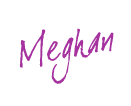Do you participate in PLC's in your district?
Last year, my colleagues and I wanted to learn how to become
better writing teachers. Our question which we would use to drive our learning was: How can teachers as
writers promote and strengthen writing instruction? We decided that we would use our own personal
writing linked to our students writing process and go from there. Although it
made us a bit uneasy to share in front of our colleagues, in the end it made us
have empathy towards our students and realize all of the tools writers need to
be successful, from the environment to the actual nitty gritty details that writing
can demand.
We decided as a group that voice was our hardest trait to
teach so we all decided to write a piece about the first day of school. We
each chose to write from a different perspective. Some of the perspectives were: bus driver,
teacher, student, principal and the school itself. To our surprise this was a
pretty fun piece to write and one that we could not only use in our PLC but
also with our students. I’ve found that
my students just LOVE when I share my own writing with them, from the
brainstorming, to the rough draft, to the final completed piece.
Here was my feeble attempt to write using the voice of a student on
the first day of school.
Voice: Student
I could see the flashing lights
approaching in the distance. The sound
of the school bus coming to a stop and the opening of the bus door is one that
you never forget. Ms. Jackie, as we
called her, was alright as a bus driver.
She was for lack of a better term, typical. The bus ride was fine, nothing out of the
ordinary. I climbed up the stairs chose
my usual area of the bus to sit and reserved the spot next to me for my best
friend, who would be joining us in exactly three more stops. (I thought to
myself, I wonder if the other kids I just walked by noticed my new cool coat
and backpack?). Things were going well.
Soon we were there. The school
smelled, well, like a school should; erasers, Elmer’s glue and old or should I
say loved books. It was just as I had
expected. As I walked down the hall I could
see my teacher smiling. I had the nicest teacher in the school this year and to
top it all off, ALL of my best friends were in my class. Wow, I thought to
myself, could this year get any better?!
I took out my perfectly labeled purple
polka dotted sparkly folder, matching journal, crayons, markers, colored pencils
and neatly piled them on my desk.
Beep…Beep…Beep! What was that sound?
It was then I realized my alarm clock was going off. I was going to be late for
the first day of school! My great start to the school year was about to go
downhill fast if I didn’t run to catch the bus! Some dream that was!
How do you successfully teach the craft of writing to your students?





































.JPG)
.JPG)



